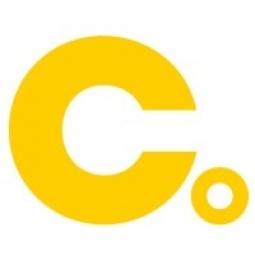Customer Company Size
Mid-size Company
Region
- America
Country
- United States
Product
- CensorNet’s Secure Web Gateway
Tech Stack
- Web Proxy Server
- Cloud-based Database
Implementation Scale
- Enterprise-wide Deployment
Impact Metrics
- Productivity Improvements
- Customer Satisfaction
Technology Category
- Cybersecurity & Privacy - Cloud Security
Applicable Industries
- Healthcare & Hospitals
Applicable Functions
- Business Operation
Use Cases
- Cybersecurity
Services
- Cloud Planning, Design & Implementation Services
About The Customer
Samuel Simmonds Memorial Hospital (SSMH) is located in Barrow, on Alaska’s North Slope, 360 miles north of the Arctic Circle - the northernmost city in the USA. The original hospital was constructed in 1963 to provide a critical access facility to residents of an area larger than the state of Washington. The new, 100,000 sq ft hospital building, opened in 2013, is four times larger than the original and offers patients a greater range of services. SSMH is administered by the not-for-profit Arctic Slope Native Association (ASNA) on behalf of the Indian Health Service. With around 61% of Barrow’s population being Iñupiat, the hospital’s prime objective has been to provide culturally sensitive quality healthcare for the communities of the Arctic Slope and was rewarded recently with the Joint Commission’s Gold Seal of Approval.
The Challenge
Samuel Simmonds Memorial Hospital (SSMH) is located in a remote location in Barrow, on Alaska’s North Slope, 360 miles north of the Arctic Circle. The hospital was constructed in 1963 to provide a critical access facility to residents of an area larger than the state of Washington. The hospital's prime objective has been to provide culturally sensitive quality healthcare for the communities of the Arctic Slope. The rebuilding of the hospital provided the perfect opportunity to update technical equipment. The challenge was to provide effective web filtering in this remote location to ensure that the hospital complies with the Health Insurance Portability and Accountability Act (HIPAA). This protects the privacy and security of health information, in order to guarantee patient and staff confidentiality. The remote location of the hospital had placed a greater than normal temptation to use the internet for non work-related activities.
The Solution
CensorNet’s web security and content filtering software has been seamlessly providing safe internet access at the original hospital since 2005 and there was no hesitation by SSMH in continuing to use the solution at the new location. CensorNet Professional (now CensorNet Secure Web Gateway) provided SSMH with the following key benefits from day one: The software helps ensure that all internet usage complies with HIPAA. The wide range of web access control and reporting functionality has increased internet safety and improved productivity amongst staff. The software acts as a web proxy cache to mitigate for the inherently slow speeds of the satellite connection by easing bandwidth requirements. By blocking or restricting access to bandwidth intensive downloads or applications, speed is further enhanced with costs due to data usage also reduced. Excellent reliability with calls to CensorNet technical support needed only around once or twice per year. The remote location (Barrow has no external access by road) and polar climate means that SSMH needs to be self-sufficient.
Operational Impact

Case Study missing?
Start adding your own!
Register with your work email and create a new case study profile for your business.
Related Case Studies.

Case Study
Hospital Inventory Management
The hospital supply chain team is responsible for ensuring that the right medical supplies are readily available to clinicians when and where needed, and to do so in the most efficient manner possible. However, many of the systems and processes in use at the cancer center for supply chain management were not best suited to support these goals. Barcoding technology, a commonly used method for inventory management of medical supplies, is labor intensive, time consuming, does not provide real-time visibility into inventory levels and can be prone to error. Consequently, the lack of accurate and real-time visibility into inventory levels across multiple supply rooms in multiple hospital facilities creates additional inefficiency in the system causing over-ordering, hoarding, and wasted supplies. Other sources of waste and cost were also identified as candidates for improvement. Existing systems and processes did not provide adequate security for high-cost inventory within the hospital, which was another driver of cost. A lack of visibility into expiration dates for supplies resulted in supplies being wasted due to past expiry dates. Storage of supplies was also a key consideration given the location of the cancer center’s facilities in a dense urban setting, where space is always at a premium. In order to address the challenges outlined above, the hospital sought a solution that would provide real-time inventory information with high levels of accuracy, reduce the level of manual effort required and enable data driven decision making to ensure that the right supplies were readily available to clinicians in the right location at the right time.

Case Study
Gas Pipeline Monitoring System for Hospitals
This system integrator focuses on providing centralized gas pipeline monitoring systems for hospitals. The service they provide makes it possible for hospitals to reduce both maintenance and labor costs. Since hospitals may not have an existing network suitable for this type of system, GPRS communication provides an easy and ready-to-use solution for remote, distributed monitoring systems System Requirements - GPRS communication - Seamless connection with SCADA software - Simple, front-end control capability - Expandable I/O channels - Combine AI, DI, and DO channels

Case Study
Driving Digital Transformations for Vitro Diagnostic Medical Devices
Diagnostic devices play a vital role in helping to improve healthcare delivery. In fact, an estimated 60 percent of the world’s medical decisions are made with support from in vitrodiagnostics (IVD) solutions, such as those provided by Roche Diagnostics, an industry leader. As the demand for medical diagnostic services grows rapidly in hospitals and clinics across China, so does the market for IVD solutions. In addition, the typically high cost of these diagnostic devices means that comprehensive post-sales services are needed. Wanteed to improve three portions of thr IVD:1. Remotely monitor and manage IVD devices as fixed assets.2. Optimizing device availability with predictive maintenance.3. Recommending the best IVD solution for a customer’s needs.

Case Study
HaemoCloud Global Blood Management System
1) Deliver a connected digital product system to protect and increase the differentiated value of Haemonetics blood and plasma solutions. 2) Improve patient outcomes by increasing the efficiency of blood supply flows. 3) Navigate and satisfy a complex web of global regulatory compliance requirements. 4) Reduce costly and labor-intensive maintenance procedures.

Case Study
Cloud-based healthcare solution for Royal Philips
Royal Philips wanted to launch its cloud-based healthcare solution HealthSuite Digital Platform in China to deliver services to help cope with challenges related to urbanization and population growth. Philips wanted to achieve this goal by combining mobile, cloud computing and big data technologies. To bring this platform and product to market, Philips required cloud computing and local technical service capabilities in China, in addition to a flexible IT infrastructure that could handle user requests.








